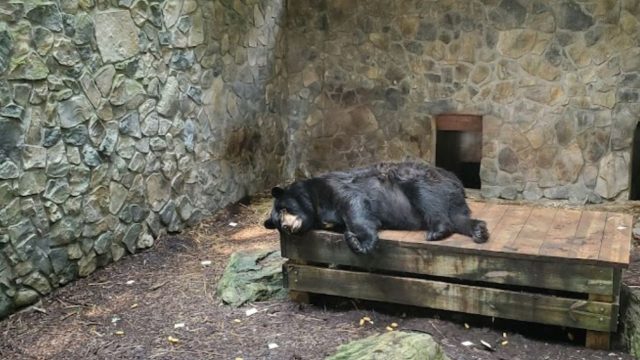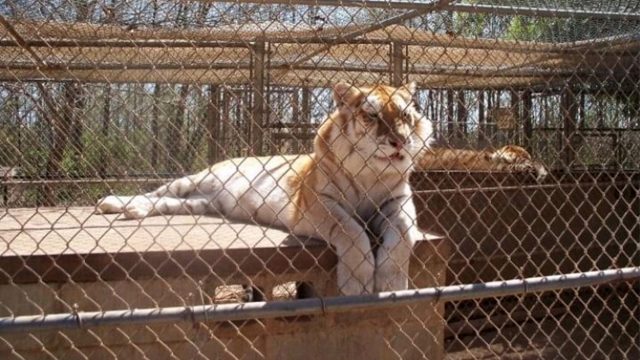Legally Brief: The Cruel Mechanics of Cecil’s Agonizing Death
In June of this year, Walter Palmer, a Minnesota dentist, paid $50,000 to a professional hunting guide in Zimbabwe.
Palmer later claimed that he believed this fee would give him the legal right to kill an African lion with a high-powered crossbow. He could then bring home the lion’s head as a trophy advancing his standing among his fellow sport hunters at Safari Club International and the Pope and Young bowhunting club. The lion he ultimately shot turned out to be Cecil the Lion, a major attraction at Hwange National Park in Zimbabwe and the subject of an Oxford University research study started in 1999. Palmer first wounded Cecil with a shot from his crossbow, then killed the lion 40 hours later, on July 1, with a rifle shot.
The legality of Palmer’s actions is being called into question, centering on the likelihood that Cecil was illegally lured from the National Park to be killed, but the Pope and Young club has refused to rescind Palmer’s membership.
The idea that Cecil—or that any lion, or any animal at all, ultimately—can be killed in a pay-to-kill trophy hunt, whether for profit or personal gratification, seems ethically outdated and indefensible to many of us, if not outright unbelievable. Perhaps in part because of this, Cecil’s high-profile death (in comparison to the anonymous deaths of millions of animals hunted annually) has brought about the potential for some change, as the attention paid by government and corporate officials is raising public awareness.
Policy and practice changes have been proposed that would discourage such trophy killings or the transport of bodies, especially for animals deemed endangered or otherwise threatened. For example, in the wake of Cecil’s killing, several major airlines followed Delta’s lead in banning the transport of most animal trophies on their flights from Africa.
Perhaps equally worthy of our attention, though, is Palmer’s practice of bowhunting, and the slow, painful deaths it too often brings about. Bowhunting enthusiasts—the Archery Trade Association’s data suggest there are at least 1.9 million of them in America—embrace the method as some step closer to a fair playing field, less technology-dependent and more ‘ancestral’ or ‘instinctive’ than hunting with firearms.
Such sentiments may be nostalgic but ignore reality. Modern bowhunting is not done with stone-age tools. The first featured item listed for purchase on american-bowhunter.com is a $78 arrow-retrieval kit, including “Retriever Pro Reel, Mounting Hardware, 25 yards of 200# Hi-Vis Braided Dacron line, 2 AMS Safety Slide Kits and Operation and Instruction Booklet for Mounting to your bow.” The most highly rated weapon on the site (pictured) retails for $529.99 and looks more like a tool of Star Wars’, Boba Fett, than a bow-and-arrow. Hardly Paleo.
More importantly, even hunting advocates acknowledge that hunted animals, whether shot with guns or arrows, can wander for hours or days with non-lethal wounds, develop peritonitis or crippling injuries, and die slow deaths if the hunter’s shot is not accurate.
Bowhunting, dependent as it is on higher “skill” and endurance from its human practitioners, only increases the odds of cruel outcomes, and decreases the odds that a targeted animal will even be “harvested.” Thrill of the hunt, ego gratification, bloodlust—however the hunter’s motivation might be characterized, his actions too often result in horrific cruelty and always inflicted with zero necessity.
After wandering for 40 hours, wounded with a high-powered crossbow by a man who owns a 650-acre hunting lodge, a man whose Safari Club International profile credits him with 43 trophy kills, a man who told the New York Times in 2009 that he “can hit a playing card from 100 yards with his compound bow” and “eschews bringing a firearm on hunting trips as a backup,” Cecil the Lion ultimately had to be killed by that man at close range with a rifle. There’s nothing instinctive about any of that, nothing ancestral or glorious or noble.
Bowhunting is every bit as cruel and out of touch with nature as any other form of modern sport hunting, if not more so. Cecil was king of Hwange National Park until a rich man with an expensive toy paid a local man for some sloppy, kill-sanctioning paperwork. It happens all the time, even in America, but most hunted animals don’t have any celebrity. With any luck, Cecil’s death will force us to pay closer attention and perhaps drive more Americans to choose no hunting over bowhunting.
Focus Area
Issues
Related
-
Lawsuit Filed Against Tiger Creek for Violating Endangered Species Act
The lawsuit alleges federally endangered and threatened animals such as the tigers, lions, and ring-tailed lemurs are receiving inadequate care at Tiger CreekMarch 16, 2022 Press Release -
Lawsuit Filed Against Pennsylvania Roadside Zoo Results in Rescue of Eight Animals
Thanks to Animal Legal Defense Fund supporters, a tiger named Nila, two lions — Buddy and Missa, two ring-tailed lemurs, a Mikado pheasant, a military macaw, and a blue-and-gold macaw will at last have access to species-appropriate habitats and enrichment.February 2, 2022 News -
Notice of Intent to Sue Sent to Tiger Creek for Violating Endangered Species Act
The Act has authority to protect federally endangered and threatened animals such as the tigers, lions, and ring-tailed lemurs enduring inadequate treatment at Tiger CreekJanuary 10, 2022 Press Release



